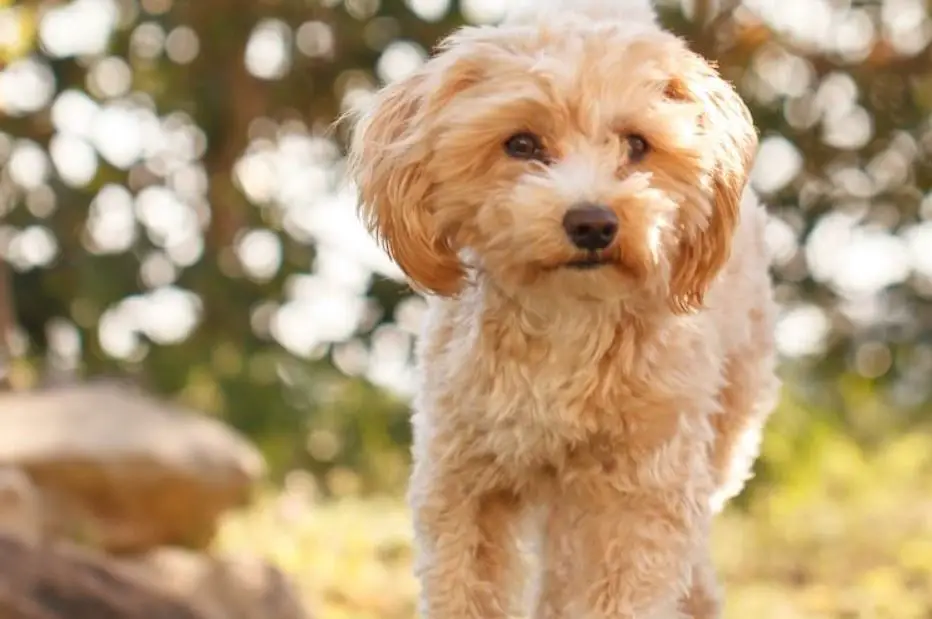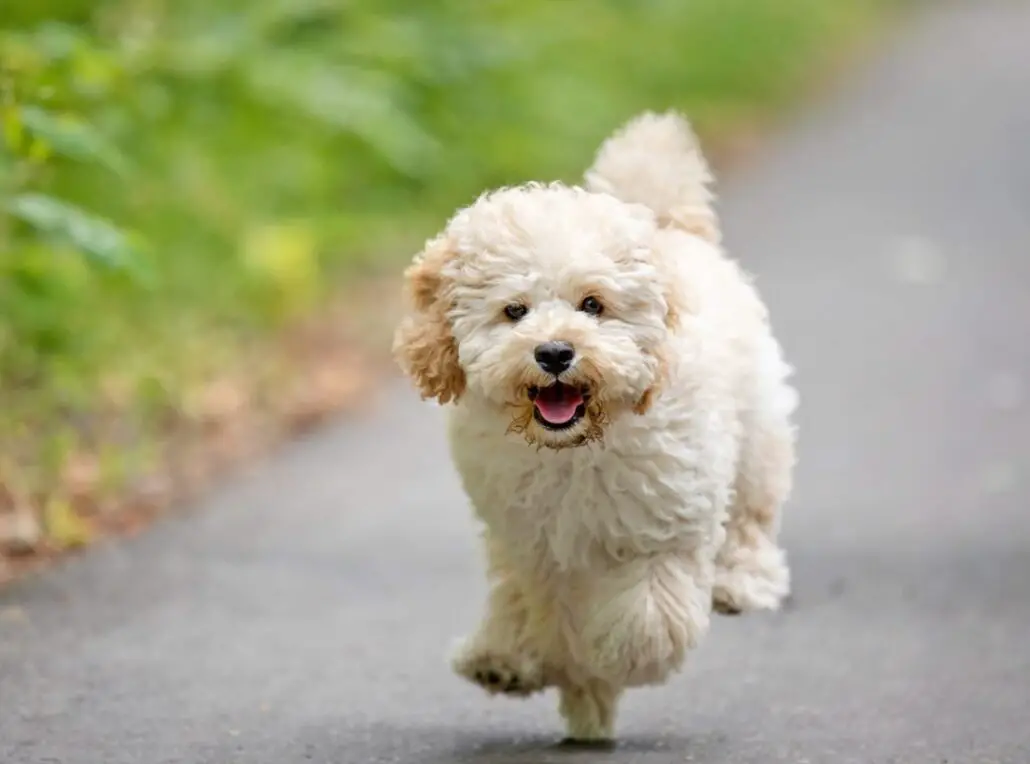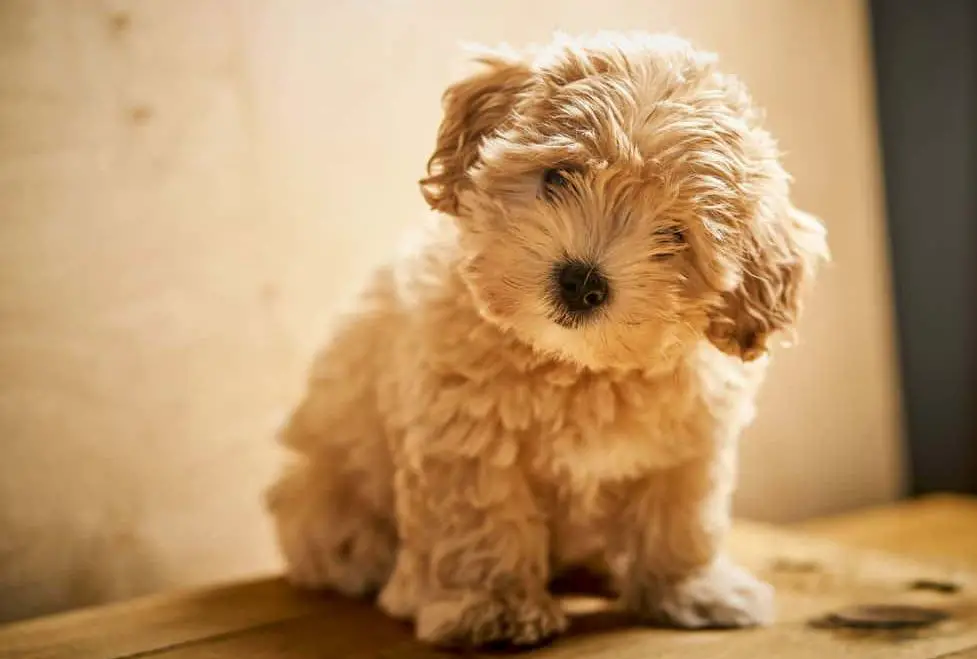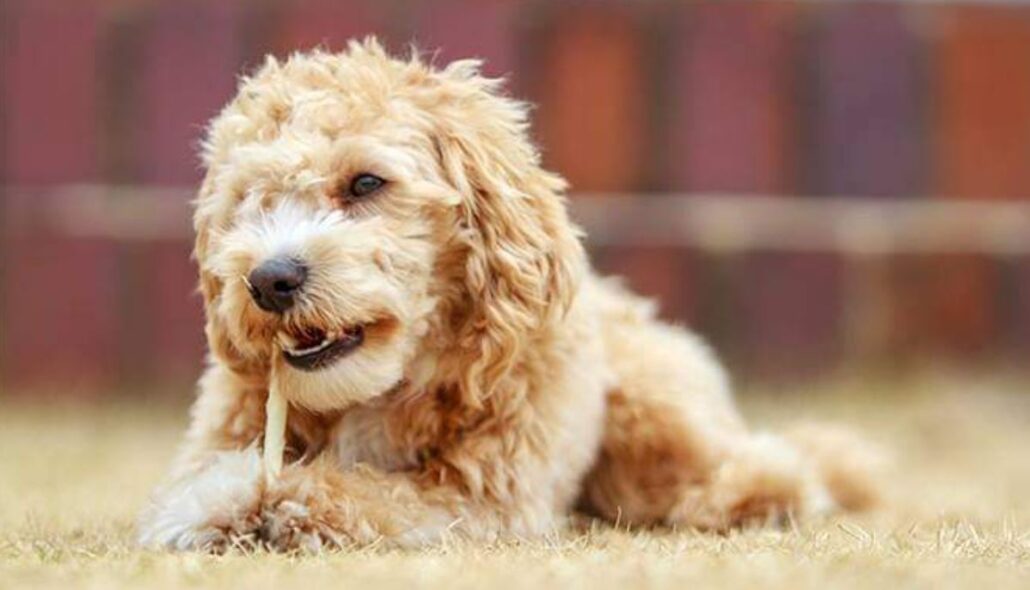Pros and Cons of Maltipoo Ownership – Should You Get this Dog

The Maltipoo or Malta poodle is an adorable sight to see. It’s hard to resist cuddling one, especially if it’s yours. Your Maltipoo is an excellent house pet and is friendly to other humans and people alike.
History
Your Maltipoo is a newly created small breed of dog. It was bred primarily for people who suffer from allergies. This breed really doesn’t have a long history because of being so recent of a crossbreed.
When two breeds are crossed over and over doesn’t mean it makes a new breed. Instead, a new breed is created from animals with common ancestors that look similar in character and appearance.
The breeders choose puppies with the traits they want in temperament, appearance, and size. Then these puppies are bred over generations to achieve the desired qualities.
The Maltipoo crossbreed has become more popular in the last 10 to 20 years. It’s claimed that the hybrid is hypoallergenic, but no dog truly is hypoallergenic.
However, your Maltipoo is close because he doesn’t shed fur. So, for many people, a Maltipoo won’t trigger asthma or seasonal allergies.
All About the Maltipoo

Size:
Depending on how large of the Poodle parent, your Maltipoo could vary in size. The average height for your dog could be between 8 to 14 inches tall. Your pup could weigh between 5 to 20 pounds.
Coat:
The coat of your pet can be thick and wavy or soft and silky. Your Maltipoo doesn’t shed, but you need to brush him so his fur doesn’t tangle. When you groom your dog, you will need to brush him with a slicker brush daily. Start at the head, focusing on getting behind the ears and the stomach. You will need a special brush for mats as well.
Since these dogs don’t shed, it’s essential to keep their coats trimmed. However, trimming the coat and facial hair of a Maltipoo takes a particular skill, so a professional groomer is best unless you have those skills.
Appearance:
Your pup’s head is well portioned to the legs and other parts of his body. The eyes are dark and circular, with the nose being small and dark. When sleeping or relaxing, the ears will fall downwards. However, when your dog is alert, the ears will face up.
Personality:
The characteristics of the Maltipoo are different and unique from other dogs. Your dog will be gentle, caring, loving, and affectionate. As he gets older, your dog will become more playful. Your pup will love attention. This means he will sleep anywhere you are sitting.
Your dog could end up on your lap, in your arms, or even sleeping on your feet. Because of this strong desire for affection, your pet could develop separation anxiety if separated from you for too long. So, you need to train him, so your dog is secure when you leave home.
Temperament:
A Maltipoo has a mild disposition, which means your dog will be affectionate, sweet, and gentle. These dogs have a happy demeanor, enjoy life, and are very loyal.
The males are said to be more loving, with the females being more independent. The males are a little bit bigger than the females by only a few pounds. The females mature at a faster level than the males do and are considered mature at six months.
It is advisable to socialize your pup early; otherwise, he might become too possessive of you. This breed also gets along with cats pretty well. Your dog can become territorial too at times if an unknown dog enters the home. There will probably be snapping and barking, but that’s about it.
Shedding Level:
This breed sheds very little throughout the year.
Life Expectancy:
Maltipoos live for up to 15 years on average if they are well cared for. Vet checkups are important for the health of your dog.
Exercise Needs:
This dog’s exercise needs aren’t overwhelming. One twenty minutes’ walk a day will be all he would need. Your dog will tire out quickly, so playing with toys will help to wear him out.
But until your pup’s energy levels are drained, he will be bouncing around the house. A Maltipoo doesn’t enjoy staying still in one place very long.
Cost:
The cost of buying your Maltipoo can be a little expensive. A healthy puppy bred in excellent conditions with a reputable breeder can cost as much as $2,000.
You can find less expensive puppies for $400-$800, but these puppies would most likely come from a backyard breeder or puppy mill. In addition, your puppy could have severe underlying health conditions which wouldn’t show up until he was a year old.
Color of Coat

Because the color of a Maltipoo coat can be so varied, it has its own section. Here is a list of all the different colors your dog’s coat could be.
- Black: A true black-coated Maltipoo is truly rare, and the coat will be a deep ink black. The coat can not have any other color in it. A true black will not have a color change.
- Blue: This is rare coat color and is a diluted black. The skin pigmentation is what the blue is based on. If the eye rims, paw pads, and nose are blue, your pup will be blue, not black. The Maltipoo is born black, and the color change happens between 1 to 2 years.
- Brown: Brown is a deep dark color that is much deeper than golden, bronze, or tan. The bb gene is what creates the brown as opposed to the BB gene of black. As a result, there will be no black anywhere on your dog’s body, including his nose and eyes.
- Café Au Lait: This is a rare poodle color, and so it is also with Maltipoos. The color is a light shiny tan, and it’s based on skin pigmentation. So if your dog is Café Au Lait, he will have dark almond eyes and a liver nose.
- Bronze: Since Maltipoos don’t have a breed standard or official coloring, bronze is becoming standard. This color is a shiny lighter brown, more of a tan.
- Cream: Your dog will be an off-white color, a lovely soft hue. The light cream is almost white, but there is a definite difference when put beside a white Maltipoo. The Cch gene is what causes a dog that would be white to become cream. Some dogs will have darker coloring around the ears.
- White: A purebred Maltese is pure snow white and the bred with a poodle that’s pure white, your dog will be pure white. These are the most sought-after colors for a Maltipoo.
- Gray: A Maltipoo can be born with the color gray and stay gray for life. But it’s not uncommon for a dog that’s parti-black to turn gray when he’s between 4-5 years old.
- Red: This is scarce since most of the Maltipoo bred 50/50 will have a light coat shade. Red is a rare color even for a poodle and became an official AKC color for poodles in 1980.
- Apricot: The recessive gene f decides the dog’s coat will be apricot or red. Some dogs have an apricot coat so light that it looks cream. But if looked at closely, there will be a red tint to the hair. An apricot coat that’s solid will have a darker and deeper color. If that happens, then the dog’s coat will be red.
- Silver: If your puppy is born silver, he will be dark and then become lighter as he grows older into silver. Silver is produced by the silver allele V gene, which is a diluted gray. If you put your dog with a silver coat by a dog with a gray coat, your dog will have more shine to his coat.
- Silver Beige: This is a diluted brown, which is rare. Your puppy would be born with a brown coat, and the change in color will begin between 6-7 weeks. Your dog’s coat will lighten around the paws and his face. By the time he is two, his coat will be entirely changed over to the silver beige shiny unique hue. In addition, your dog will have black skin pigmentation, nose, paws, and eyes.
Health Issues

As with any dog, there are health issues in your Maltipoo that you need to watch for. Some of these health issues are:
- Epilepsy: If your pup does end up with epilepsy, the seizures can be managed with medication.
- White Shaker Syndrome: This disease causes tremors throughout your dog’s entire body. It can also result in a lack of coordination. It tends to show up when the dog is six months to three years old.
- Patellar Luxation: This health problem is often found in small dogs. It’s caused by the tibia, patella, and tibia not being aligned correctly.
- Legg Calve Perthes Disease: The degeneration of the femur bone is a condition that is common in small dogs. The disease results in joint and bone inflammation.
- Portosystemic Shunt (PPS): Symptoms of PPS in your dog can include lack of appetite, incoordination, urinary tract problems, poor balance, and stunted growth.
Pros
Training:
Your dog can be easy to train with the correct rewards. Since this breed is food-driven, training with healthy treats will make it easier. With repetition and practice, your pup will learn in no time at all.
Kids:
These dogs are very gentle and sensitive with children. They instinctively know when to be calm around young ones. The best age for kids and Maltipoos is eight and up.
Emotional:
Your dog is susceptible to emotions, and if you’re feeling down or hurt, he can feel it. Your pup will want to comfort you and make you feel better. Because of this sensitivity, these dogs also make excellent therapy dogs.
Cons
Barking Tendencies:
This breed of dog is more prone to barking than most other small breeds. It is a difficult habit to break too, it seems as if this breed is naturally territorial.
Kids:
These are tiny dogs, and younger children can be rough when handling them. If your dog feels threatened, he will most likely bite. So, matter how old your kids are, supervise them when around your dog.
Stubborn:
These dogs have a stubborn streak a mile long. The females are significantly higher strung and not willing to listen. The stubbornness can make training a little difficult but will patience, your dog will learn.
Separation Anxiety:
Since your dog loves being the center of attention, if you’re not home much, it can cause separation anxiety. This problem can be taken care of by investing in a dog walker or spending some time in a doggy daycare. Keeping your dog occupied and happy will help avoid this common problem.
Tips for Raising a Maltipoo

Here are some extra tips for raising your Maltipoo:
- Keep your yearly vet check appointments because these dogs can develop a health issue at any time. Without a wellness check, your pet can suffer needlessly, have delayed treatment, and end up with a worsening prognosis.
- Clean your pup’s teeth daily to avoid life-altering and painful dental problems. Plaque is produced in your dog’s mouth 24 hours a day and can harden into tartar. Tarter eats away at the tooth enamel and can lead to painful infections. Your pet can develop gingivitis and jawbone deterioration, and eventual tooth loss. In addition, loss of teeth can affect your dog’s ability to eat correctly.
Conclusion
If you want a gentle, sweet-natured dog who will love you unconditionally, then this dog is for you. You will need to give your dog a lot of attention and keep children from being too rough.
There is a color of coat for whatever is your favorite color. These little dogs are somewhat time-consuming to care for, but their love, faithfulness, and good nature are worth it.


